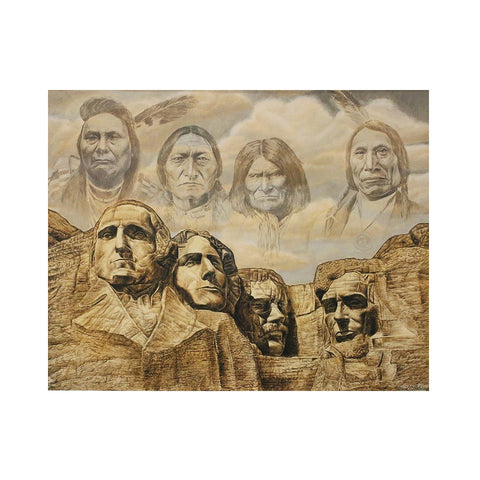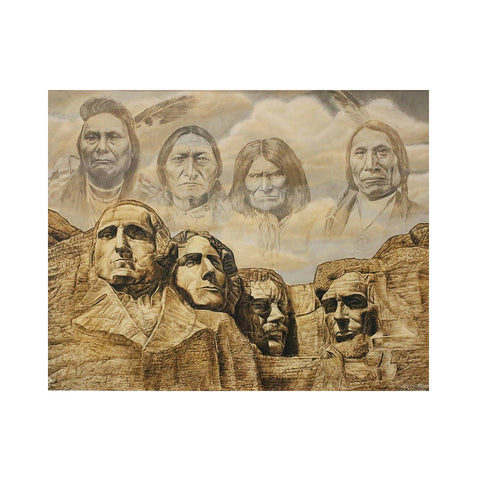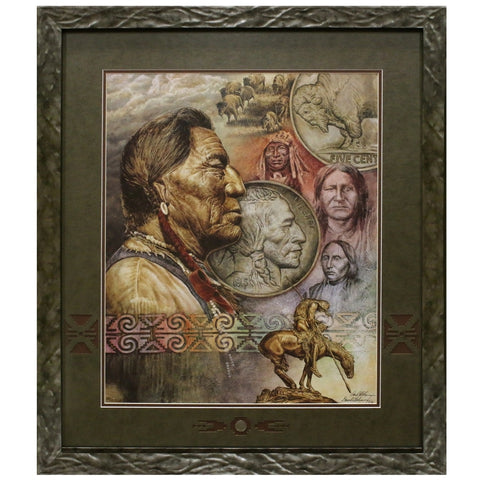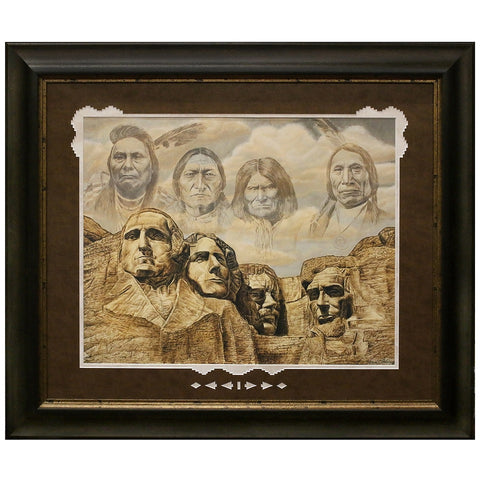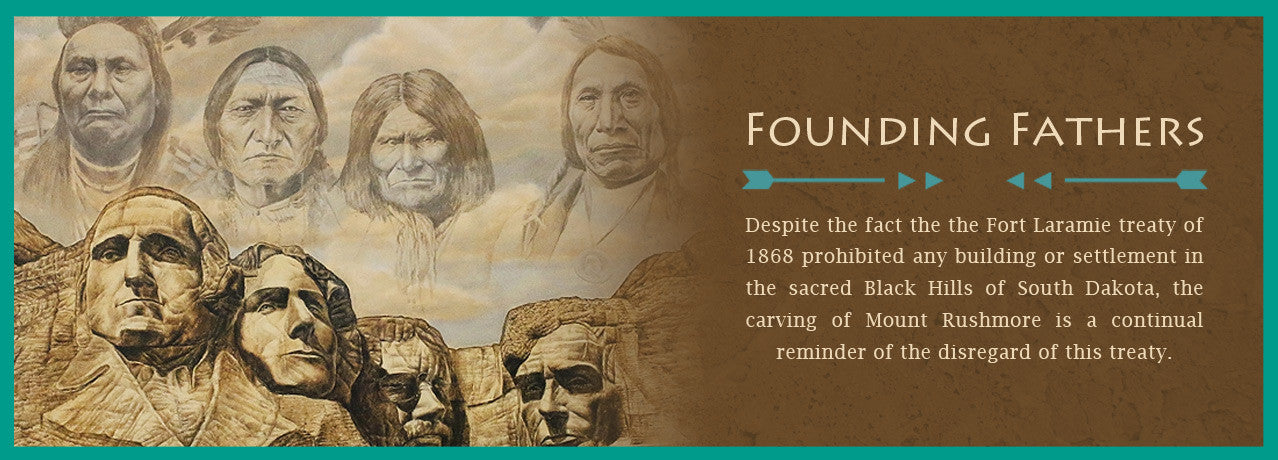
Founding Fathers
Mount Rushmore is an unmistakable symbol of American pride and strength, Ironically, sculptor Gutzson Borglum chose a most unusual location to begin the momentous task of carving the portraits of four famous American presidents. Mount Rushmore resides within the boundaries of Harney National Forest and Custer State Park. Both General William S. Harney and General George Armstrong Custer led expeditions into the Black Hills, directly violating government treaties signed with the Sioux. Sadly, these were to of the most detestable people in Sioux history.
What adds to this irony can be found in Borglum's inspiration to carve the colossal memorial. According to him, the presidents he chose to depict embodied what he believed to be the cornerstone of this country, that "man has a right to be free and happy." Remorsefully, this sentiment was never extended to the original occupants of the Black Hills; the Sioux. The famous Fort Laramie Treaty of 1868, signed by both General Sherman and General Harney, stated that the Great Sioux reservation would be "set apart for the undisturbed use of the Indians" and that "...the United States now solemnly agrees that no persons ... shall ever be permitted to pass over, settle upon or reside in the territory."
Ultimately, the meaning of the word "freedom" was defined differently by the United States government and the Native Americans. When this word is put in its proper context, it becomes easy to see why famous Indian leaders, such as Chief Joseph, Sitting Bull, Geronimo, and Red Cloud are admired as those that fought for their people's freedom and way of life. As the Mount Rushmore image of our founding fathers stands in the forefront of our consciousness, let us make room for some other well-deserved historical figures. May we allow our history to tell their story as well.

